The CAA has issued a statement through ARPAS-UK which sets out their interpretation of the rather ambiguous regulation of not flying within 50m of ‘people, vehicles, vessels or structures’ which are not under the control of the pilot-in-command of a UAV. The statement is set out below without alteration or addition.
50M CLARIFICATION STATEMENT FROM THE CAA
‘’The absolute legal distance requirements are set out in article 167 (now Art 95) of the Air Navigation Order, and they state that you must not fly ‘within 50m of a person, vehicle, vessel or structure that is not under the control of the person in charge of the aircraft’ – This is how it is written in law. It doesn’t mention anything about horizontal distance I’m afraid, so in absolute legal terms, you would need to think of it as a bubble.
Note also however, that this article only applies to ‘small unmanned surveillance aircraft’, so for a drone that does not have a camera fitted to it, or for R/C model aircraft (fixed wing or helicopters), there are no specific ‘avoidance distances’ set down.
So, the 50m ‘rule’ only applies to surveillance (by this we basically mean ‘camera’) equipped ‘drones’, and it can only legally be taken as being a ‘bubble’ – perhaps with hindsight, this regulation should have been written slightly differently, but it was thought to be acceptable at the time it was written – we know that articles 166 and 167 (now Art 94 and 5) need a revision, partly to make the wording more understandable for the general public, but also to make the requirements more easily enforceable for the Police (how do you really ‘measure’ what 50m is?), and this is what we are starting to do at present
However, that is not necessarily the complete story – it doesn’t mean that someone flying a non-camera fitted drone can do what he/she likes without any fear of arrest/prosecution.
- ANO article 138 (now Art 141) (Endangerment – “A person must not recklessly or negligently cause or permit an aircraft to endanger any person or property”) is the overriding article that can be used at any time if it is considered that a person is operating a drone (which is still defined as an aircraft) inappropriately.
- You can also refer to ANO article 166(2) “The person in charge of a small unmanned aircraft may only fly the aircraft if reasonably satisfied that the flight can safely be made” as well in that he/she is responsible and must take reasonable steps to ensure the flight is conducted safely.
So, in the case of someone hovering a drone ‘51m’ directly above/almost above someone, yes – it is ok with regard to art 167, but this could easily fall under endangerment, especially if the person flying it has not taken any reasonable steps to satisfy him/herself that the flight can be conducted safely.
At the end of the day, we must consider what the ‘intent’ of the regulations is – in simple terms, the intent of the regulations is to protect third parties (ie. people and properties that are not involved in the operation), and so this is the primary consideration that should be made when making an assessment of whether or not an offence has been committed, or when considering a prosecution.
These regulation apply to all small unmanned aircraft (20kg or less) – there are no differences for above 7kg or 7kg or less. With regard to Permission holders, the bottom line is that it depends on what is written on their permission. We normally issue permissions to the 50m ‘limitation’ (so no difference) but if an operator has been able to demonstrate to us that his/her operation can be flown safely to within a lesser distance (and we are satisfied with this), then the text in the permission will reflect the shorter distance.”
